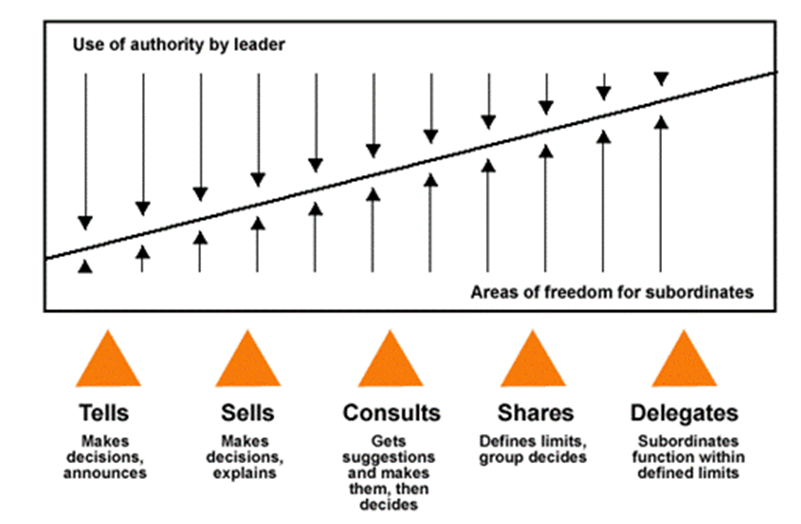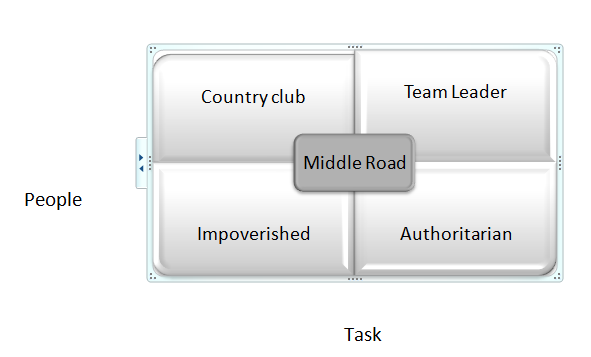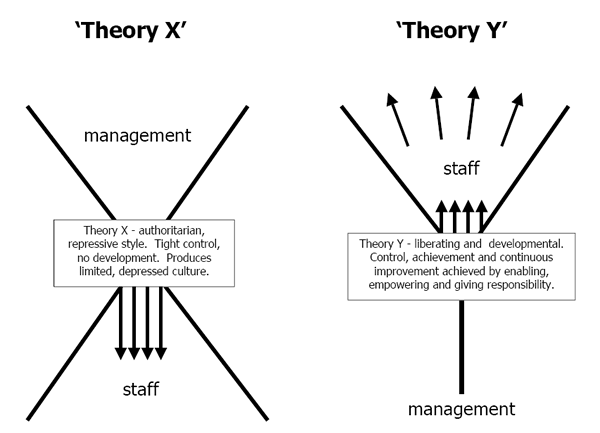Posts by John Dudovskiy

Leadership Continuum Theory is a contingency leadership theory developed by Tannenbaum and Schmidt (1958). This theory is based on the idea that many classifications of leadership such as autocratic or democratic are extremes and leadership practices in real life situations lye somewhere between the two extremes. In other words, the main rationale behind the introduction of the model is that current classifications of leadership styles are too general, in black and white terms, and in reality leadership practices exercised by the majority of organisational managers lies somewhere in the middle. Tannerbaum and Schmidt’s Leadership Continuum Theory effectively addresses the criticism that leadership styles cannot be described in highly general ‘authoritarian’ or ‘democratic’ manners, and the actual leadership styles practiced in the majority of organisations lie somewhere between the two (Gosling et al, 2003) Accordingly, Tannenbaum and Schmidt (1958) propose the idea of leadership continuum and place different variations of leadership practices along the continuum that move from autocratic leadership style towards democratic. Specific leadership styles specified within the continuum include telling, selling, consulting, and joining leadership styles. The Leadership Continuum Theory represents a just and valuable framework for analysing leadership style. This is because the theory provides wider options for the classification of leadership style, and thus has a high level of applicability in the real life business management. However, according to the criticism of Leadership Continuum Model “three factors to consider when selecting a leadership style are very subjective. In other words, determining which style to use, and when, is not clear in the model” (Lussier and Achua, 2010, p.161). References Gosling, B.R., Marturano, J. & Dennison, P. (2003) “A Review of Leadership Theory and Competency Frameworks” University of Exeter Lussier, R.N. & Achua, C.F. (2010) “Leadership: Theory, Application, & Skill Development” 4th edition, Cengage Learning Tannenbaum, R.…

The Principle of Identical Elements introduced by Thorndike and Woodworth (1901) states that the level of training transfer depends on the level of similarity between training and performance environments. In other words, the theory states that there is a positive correlation between the similarities between training and performance environments and the level of training transfer. For example, in a cross-cultural awareness training arranging role playing games where individuals have to interact with the representatives of various cultural backgrounds in typical working environments would have a positive contribution to the levels of training transfer. The essence of the Principle of Identical Elements can be explained in a way that “the more elements (i.e., content and procedure) of one situation are identical to the elements of a second situation, the greater the transfer, and thus the easier learning in the second situation” (Tracey and Mandel, 2012, p.44). Al-Araimi (2011) argues that the level of applicability of The Principle of Identical Elements in limited within organisations that have predictable and stable work environment. References Al-Araimi, F. (2011) “Power of Human Resources” Author House Tracey, D.H. & Mandel, L. (2012) “Lenses on Reading: An Introduction to Theories and Models” Guilford Press

Training transfer can be defined as “the degree to which trainees effectively apply the knowledge, skills, and attitudes gained in a training context to the job and maintained over time” (Handy, 2008, p.4). An alternative definition of the term has been proposed as “the ability of trainee to apply the behaviour, knowledge, and skills acquired in one learning situation to another” (Business Dictionary, 2012). Training transfer is divided by Werner and DeSimone (2008) into three categories: positive, zero, and negative. Positive transfer is associated with the improvement of job performance as a result of undergoing training. Zero transfer occurs in situations where training results in no impact in job performance. In negative transfer, on the other hand, the experience of undergoing training would be associated with negative implications on employee job performances. Alternative classification of training transfer relates to near versus far forms of training transfer (Al-Arami, 2011). In near transfer employees are able to apply knowledge and skills gained during the training to their job promptly in a direct manner. Far transfer instances, on the other hand, involve situations where knowledge and skills gained during the training process need to be applied by employees with a substantial level of adaptation taking into account unique aspects of their profession and organisation. For example, application of the knowledge in the workplace about the use of new computer software learned in a training session can be mentioned as an example for near transfer, whereas the application of assertiveness skills gained in training would illustrate far transfer. Saks and Belcourt (2006) point to the sampling issues associated with training transfer studies. Specifically, Saks and Belcourt (2006) convincingly argue that the majority of studies addressing the issues of training transfer have been conducted relying on specific individuals and certain training programs, thus sampling aspect…
By John Dudovskiy
Category: HRM

Bruce and Pepitone (1999) propose an interesting viewpoint according to which managers cannot motivate employees; managers can only influence what employees are motivated to do. The role of facilitating quality subordinate-superior communication at various levels effectively employing a wide range of communication channels has been praised by Shields (2007) in terms of its positive contribution in boosting employee morale. Shields (2007) stresses two specific advantages of such a practice that relate to offering employees a chance to raise their concerns and put across their points regarding various aspects of their jobs, as well as, supplying them with the feeling of engagement and appreciation. According to Lockley (2012) offering training and development programs that effectively contributes to personal and professional growth of individuals is another effective employee motivation strategy. At the same time, Lockley (2012) warns that in order for motivational aspects of training and development initiatives to be increased, ideally they need to be devised and implemented by a third party with relevant competency and experience. Alternative working patterns such as job-rotating, job-sharing, and flexible working have been branded as effective motivational tools by Llopis (2012). Moreover, Llopis (2012) argues that motivational aspects of alternative working patterns along with its other benefits are being appreciated by increasing numbers of organisations, however, at the same time; many organisations are left behind from benefiting from such opportunities. An interesting viewpoint regarding the issue has been proposed by Wylie (2004), according to which members of management primarily should be able to maintain the level of their own motivation at high levels in order to engage in effective motivation of their subordinates. Accordingly, Wylie (2004) recommends managers to adopt a proactive approach in terms of engaging in self-motivation practices. Furthermore, Wylie (2004) recommends concentrating on specific variations of intangible motivational tools such as celebrations…
By John Dudovskiy
Category: HRM

The earliest contingency theory is Fiedler’s theory. According to Fiedler & Garcia (1987, p.54) situations will create different leadership styles which are required for managing contingent on a set of factors effecting the situation. Contingency theories perceive leadership styles to be either task motivated or relationship motivated. “Fiedler’s leadership contingency argues that team effectiveness depends on an appropriate match between a leader’s style, especially a trait measure, and the demands of the situation” (Schermerhorn et al., 2011, p.297). According to this theory the group performance depends on leadership style and situational favourableness, and three aspects to focus on are: A) Relationship between leaders and the followers B) Structure of the task C) Position power of leader In accordance to the contingency theory Fiedler (1996) specifies three important situational dimensions that influence the level of effectiveness of the leader: leader-member relations, task structure, and position power. Leader-member relations relate to the degree of confidence that subordinates have in leader, as well as, the extent of their loyalty. Accordingly, in situations where a leader is accepted by the members of the group, the leader would be in a more favourable situation to lead the group. In contrary, in situations where the level of loyalty to the leader is low effective leadership would prove to be a highly challenging task to accomplish. The task structure situational dimension, on the other hand, relates to the level to which the jobs of followers are routine as opposed to non-routine. Factors determining the nature of the task structure include the level of understanding of the task by relevant parties, the ways of accomplishing the task, and the numbers of correct solutions to the problem (Gold et al., 2010). Position power is the power that is innate in the leadership position. The extent of position…

Managerial Grid introduced by Blake and Mouton (1964) classifies management practices according to the level of managers’ concern for people and concern for production. Specifically, the Managerial Grid specifies four types of managers: impoverished, authority obedience (produce or perish), country club, and team leader. According to the grid impoverished management characterises a type of management style where the manager has low level of concern for both, employees and task. Impoverished managers with low concern for people and production are the least desired type of managers in terms of achieving organisational objectives. Cases where managers focus on task with a low level of concern to people would relate to authoritarian management style. There is also an alternative management style known as a ‘country club’ where manager focuses on the quality of relationships with employees to an extent that the quality of work can be compromised. “This kind of manager would concentrate efforts on the establishment of a pleasant workplace with friendly and comfortable human relations” (Miller, 2011, p.49). Authority obedience (produce or perish) management prioritises production, but has low concern for employees. In such environments all components of production are achieve maximum input from employees. With high concern for people, as well as, for production, team leaders are best positioned to achieve organisational objectives in an efficient manner (Mumford, 2009). Moreover, as it can be seen from the figure above, some managers position themselves in ‘middle of the road’ trying to balance various management roles within the Managerial Grid. According to Blake and Mouton managers need to strive for team leader position within the grid so that positive results can be achieved with fewer efforts. References Miller, K. (2011) “Organisational Communication: Approaches and Processes” Cengage Learning Mumford, M.D. (2009) “Leadership 101” Springer Publishing Company Murphy, D.J. & Willmott, H. (2010) “Organisation…

A comprehensive project on leadership has been conducted by Alimo-Metcalfe and John-Metcalfe (2000) with the participation of more than 3,500 managers and professionals along different levels of management employed within UK National Health Service and local government that were selected on the basis of gender-inclusive and black and minority ethnic-inclusive sample. The findings of this specific project have enabled the development of 360-degree feedback tool, also known as Transformational Leadership Questionnaire. The most notable distinctive point associated with this project compared to others relates to the fact that Alimo-Metcalfe and John-Metcalfe (2005) this model adopts ‘nearby’, instead of ‘distant’ or ‘heroic’ approaches on leadership. The Transformational Leadership Questionnaire is based on the following scales: Scale 1 Genuine concern for others’ well-being and development Scale 2 Political/stakeholder sensitivity and skills Scale 3 Inspirational networker and visionary promoter Scale 4 Empowers, delegates, develops leadership potential Scale 5 Integrity, consistency, honesty, and openness Scale 6 Accessibility, approachability, sensitivity Scale 7 Decisive, determined, self-confident, resilient Scale 8 Clarifies boundaries, involves others in decision making Scale 9 Encourages critical and strategic thinking The Transformational Leadership Questionnaire scales Scale Source: Alimo-Metcalfe & Alban-Metcalfe (2000) Practical implications of the work of Alimo-Metcalfe and John-Metcalfe (2000) can be interpreted in a way that the concept of transformational leadership “far from being a key to a learning organisation, may itself be in considerable need of rethinking and revision” (Doyle, 2003, p.215). References Alimo-Metcalfe, B. & Alban-Metcalfe, J. (2000) “A New Approach to Assessing Transformational Leadership” Section and Development Review, 16(5), pp. 15-17 Doyle, C. (2003) “Work and Organisational Psychology: An Introduction with Attitude” Psychology Press

Theory X and Theory Y framework proposed by McGregor in his classic book The Human Side of Enterprise (1960) consists of two alternative set of assumptions. Theory X percieves employees to be lazy, irresponsible and untrustworthy, while according to theory Y employees are approached as one of the most valuable assets of the company. According to Theory X assumptions employees do not like their work, they lack ambition and responsibility and employees prefer to be led rather than leading others. Theory X assumes average human being to dislike the work and avoid it whenever possible. The following statements relate to Theory X assumptions: Most people must be controlled and threatened so that they can produce an adequate level of output Responsibility is avoided by an average human who desires security above all An average human being has a little ambition and has to be closely supervised at all times Theory Y set of assumptions, on the other hand, is based upon the idea that employees are generally enthusiastic about their work, they are creative and self-directive, and also employees readily accept responsibility. Theory Y is based on the following alternative assumptions: The expenditure of physical and mental effort in work is as natural as play or rest Methods of making people work are not limited to control and punishment, high level of commitment in organisational aims and objectives can result in self-direction Commitment to organisation can be achieved by designing satisfying jobs If proper conditions are created, an average human can not only learn how to take responsibility, but he can also learn to seek responsibility In practical levels, McGregor’s Theory X and Theory Y framework aims to demonstrate the potential of employees that organisations should recognise so that the level of organisational efficiency can be increased. However, as…

According to the Great Man theory leaders are born with a set of specific skills and traits that makes an individual destined for a leadership position. Also known as a trait perspective to leadership it suggests that “certain individuals have special innate or inborn characteristics or qualities that differentiates them from non-leaders” (Northouse, 2010, p.4). Specifically, these characteristics were believed to include height, weight, appearance, intelligence, disposition and others. Furthermore, “charismatic and inspirational leaders instil faith in a better future for the followers in terms of their self-expression, self-evaluation, and self-consistency” (Bass and Riggio, 2006, p. 39). Analysis of the ‘Great Man’ theory has a direct relevance to this study. It has been noted that “through most of the imperial period, literate Chinese had a Great Man theory of how their civilisation developed” (Ebrey, 2010, p.10), and thus, the theory might have impacted upon the current pattern of Chinese-style leadership. Therefore, specifications, major viewpoints, and main criticisms associated with the Great Man theory need to be analysed in a great detail within the scope of the literature review. Critics of the Great Man theory note that “leadership is an identifiable set of skills and practices that are available to all of us, not just a few charismatic men and women. The “great person” – woman or man – theory of leadership is just plain wrong” (Kouzes and Posner, 2008, p.32). Moreover, it has been argued that “leadership skills and savvy mature over time and under appropriate conditions” (Gallos, 2008, p.61), so any individual can increase the level of own leadership qualities if the individual is faced with relevant situations under appropriate circumstances. References Bass, B.M. & Riggio, R.E. (2006) “Transformational Leadership” 2nd edition Gallos, J.V. (2008) “Business Leadership: A Jossey-Bass Reader” 2nd edition, John Wiley & Sons Northouse, P.G.…

Thomas (2009) offers a comprehensive analysis of issues associated with intrinsic motivation at work. The author argues that “intrinsic rewards come to workers directly from the work they do – satisfactions like pride of workmanship or the sense that they are really helping customers” (Thomas, 2009, p.13). Three C’s of intrinsic motivation have been identified by Kohn (1993) as collaboration, content and choice. Specifically, according to Kohn (1993), collaboration involves creating an atmosphere where employees can cooperate with each-other as team members, whereas, content relates to understating the manner in which any specific job adds value and contributes to the achievement of organisational objectives. Choice element of intrinsic motivation, on the other hand, involves providing greater freedom and autonomy to employees in terms of dealing with their responsibilities, and increasing the level of their involvement in decision-making. It is important to note that although the theoretical framework of three C’s of intrinsic motivation has been introduced by Kohn (1993) almost two decades ago; it is still adequately relevant in modern work environment. References Kohn, A. (1993) “Punished by Rewards: The Trouble with Gold Stars, Incentive Plans, A’s, Praise, and Other Bribes” Thomas, K.T. (2009) “Intrinsic Motivation at Work: What Really Drives Employee Engagement” 2nd edition, Berrett-Koehler Store
By John Dudovskiy
Category: HRM
